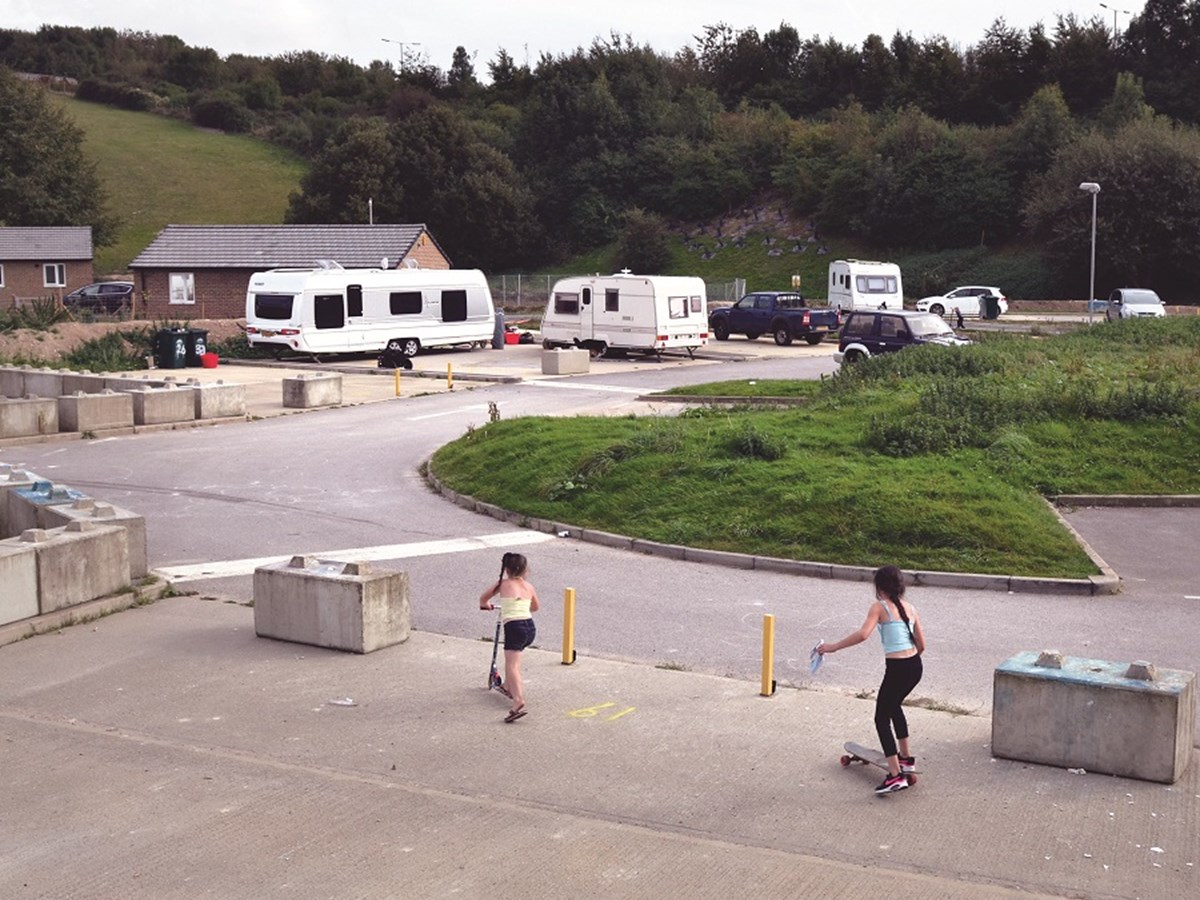
Dr Simon Ruston is a chartered town planner with 15 years’ experience in Gypsy and Traveller cases. He has assisted many private clients across the UK and is now primarily working with advocacy organisations and local planning authorities to increase high quality site provision. He is also currently working with Planning Aid England to produce a new resource to help Gypsy and Traveller communities engage with the planning system in England. This is being developed in consultation with community members via Friends, Families and Travellers.
This month is Gypsy Roma Traveller History Month, a time to celebrate, educate about and raise awareness of the UK’s travelling communities. A recent report I authored entitled Kicking the can down the road: The planning and provision of Gypsy and Traveller sites in England 1960-2023 looks at part of this history, and sadly finds that there is little to celebrate when it comes to planning’s contribution.
This history of site provision is one that oscillates between positive measures to provide sites (such as a statutory duty), and their subsequent revocation. At the same time, the ability to be able to follow a nomadic way of life has been reduced, most recently by the Police Crime and Sentencing and Courts Act 2022, part of which was recently found to be unlawful by the High Court.

Image courtesy of Friends, Families and Travellers

Image courtesy of Mary Turner
To understand the impacts of national policy and law, the report looked at 100 local planning authorities in England and makes the following key findings (amongst other matters):
- Of the 100 local planning authorities where information was available, 64% had failed to allocate sites as part of the development plan process despite 29 years of government policy and guidance that required this.
- There were 149 socially-provided sites across the 100 local planning authorities and of these sites, 119 were built before 1994, and only 30 since then (after the statutory duty to provide sites had been revoked). This matters as a higher proportion of the communities live in socially rented accommodation compared to the general population.
The research then looked in more detail at 15 different local planning authorities and from this made the following findings:
- Even though a council may have a 5-year land supply (or near to) for Gypsy and Traveller sites, planning appeal inspectors were finding that there was a lack of alternative sites. As such, the presence or otherwise of a 5-year supply is a poor indication of whether or not a council is meeting its need.
- In some cases, there was evidence that the needs of Gypsies and Travellers in bricks and mortar were being missed in accommodation needs assessments.
- One company undertaking Gypsy and Traveller Accommodation Needs Assessments was consistently using ‘turnover’ on pitches as a form of supply. This approach is problematic and results in figures being artificially reduced.
- Two of the local planning authorities relied upon private sites to meet the need for pitches, despite evidence to suggest that social provision was required.
- In two areas, sites which had been allocated in the local plan for use had not been constructed.
- In a number of cases, local plans had been adopted without site allocations for Gypsies and Travellers, on the basis of commitments from local planning authorities to meet the need in future documents that did not materialise.
- In areas where there had been no provision for sites for many years, despite there being identified need, there was no real consequence for the council.
- The Green Belt is a significant constraint to the provision of sites. In areas with a significant proportion of Green Belt, the consequences of not allocating sites led to multiple temporary permissions and in one case a large scale and costly eviction
In my experience working across England these are not uncommon occurrences.
The report did find some examples of good practice, much of which was dependent on the will of local politicians and resources being used. In my experience it is possible for councils to allocate and/or deliver sites – Leeds City Council is a good example of partnership working with a local Gypsy and Travellers grassroots organisation.
However, what is required to ensure that all councils meet the need is for national reform and the report sets out a series of recommendations which it is hoped that any incoming government might consider.
Finally, there is a shortage of planners who will represent Gypsies and Travellers, if you are interested in this work please get in contact. Likewise, if you are a council looking for some advice on how to positively meet need I’d be happy to talk to you.
Information on some of Planning Aid England’s casework support for Gypsy and Traveller communities can be found here.
This blog post is written by a guest author, and their opinions may differ from those of the RTPI.


